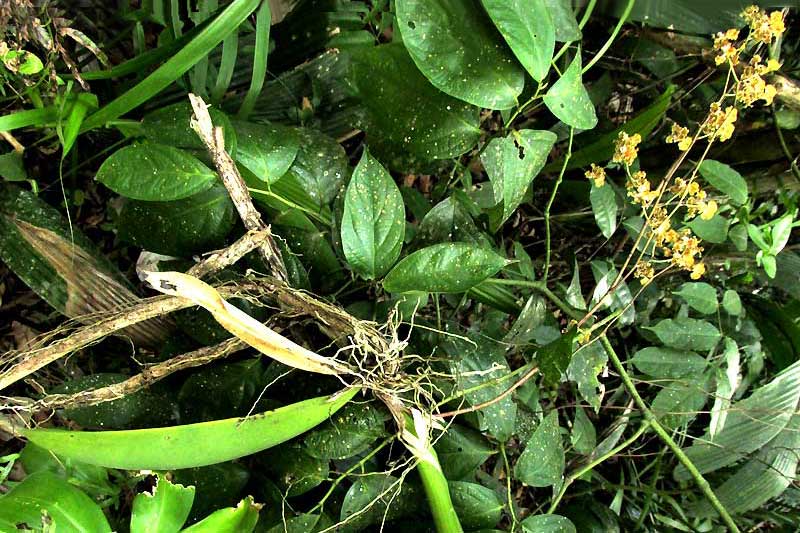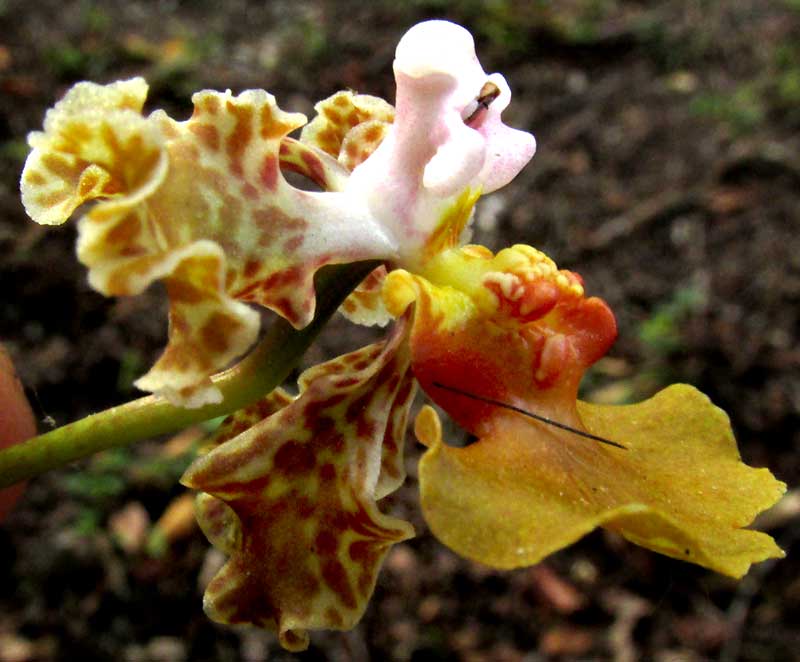Excerpts from Jim Conrad's
Naturalist Newsletter
notes from a camping trip in northern Guatemala's Petén department, April 1, 2019
PALE MULE-EAR ORCHID
Beside the highway cutting through El Rosario National Park on the east side of Sayaxché, Petén, northern Guatemala, an orchid had fallen to the ground from a tree at the forest's edge, as shown below:

The orchid's tangle of white roots are at the picture's bottom, center. The orchid's narrow, fleshy leaves radiate out from roots, and the flowering heads, or inflorescences, rise to the picture's top, right. One of the flowers appears below:

I lost a lot of time searching for an Oncidium species with flowers like this, because that's what I thought it was. Finally I learned that nowadays most experts have shifted our species from Oncidium, where it used to be, to the genus Trichocentrum, which at this time embraces about 68 species distributed from Mexico and Florida to Argentina. Of those 68 species a fair number occur in Guatemala. I still had problems with the species, and in the end it took Dennis Medina via iNaturalist to recognize this as TRICHOCENTRUM LURIDUM, sometimes called the Pale Mule-ear Orchid.
Trichocentrum luridum, occurs mainly in tropical wet regions from Mexico into northern South America.
Leaves of orchids in the Oncidium/Trichocentrum complex arise from pseudobulbs, which in many species are very conspicuous water-storage appendages at the leaves' bases. An unidentified expert on Wikipedia's Trichocentrum page writes that typical trichocentrum orchids are "...relatively small and squat with a short, few-to-several flowered inflorescence..." which contrasts sharply with the "...larger, heavier oncidiums with long, 'mule-ear' leaves and showy, branched inflorescences with many flowers, or the "rat-tail" species with terete leaves."